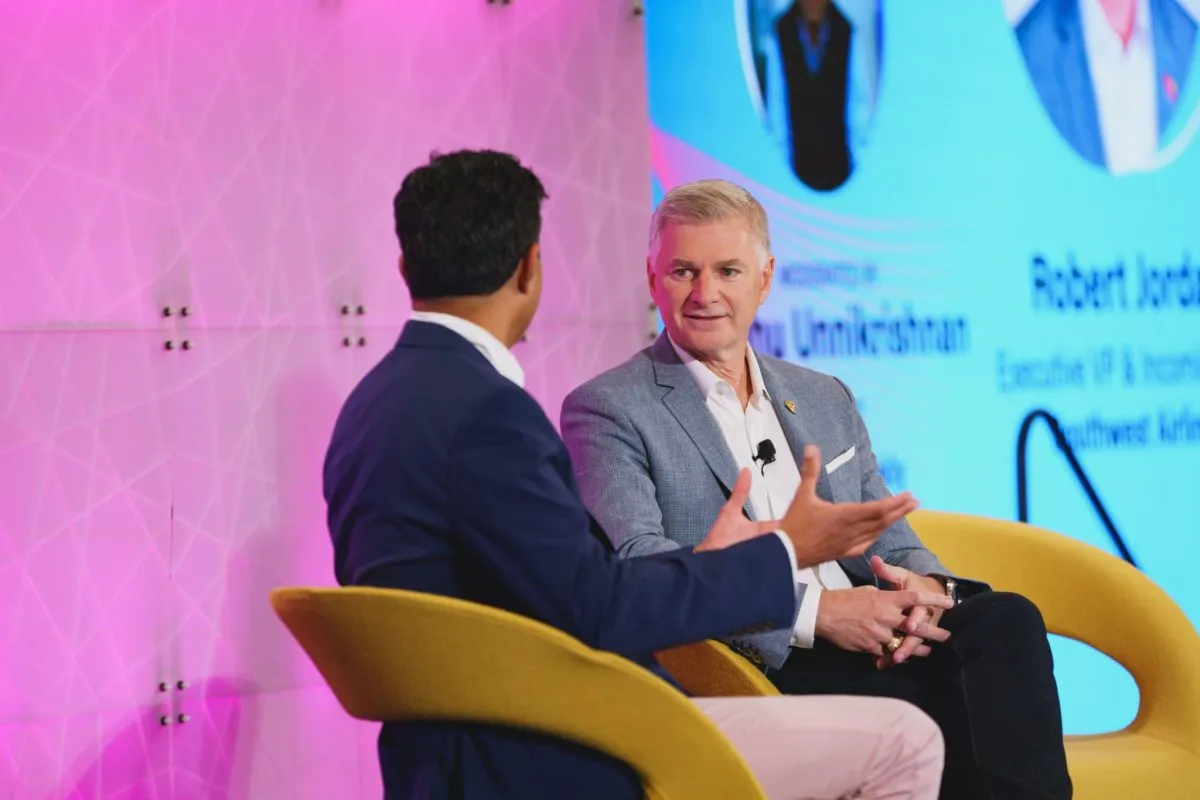Did Lufthansa Group Overreact to Low-Cost, Long-Haul Threat?
Skift Take
Lufthansa Group on Monday killed what may have been its worst strategic blunder of past decade when it said its Eurowings subsidiary will stop flying long-haul routes. The announcement came a week after the company said the subsidiary will lose more money this year than expected, a result that will reduce group earnings.
Good riddance.
Having Eurowings fly some North America and Asia routes always felt as if it was a solution to a problem that didn't exist. Yes, for a short time, as recently as three years ago, it seemed Norwegian Air and its ilk would take over the world, putting established carriers out of business. That threat has fizzled.
During the short period Norwegian looked like a disruptive competitor, no company overreacted like Lufthansa Group. As Norwegian kept (unprofitably) growing, Lufthansa ramped up its response, sending Airbus A330s to Eurowings, an airline the group conceived earlier to combat the low-cost, short-haul threat. Lufthansa moved so fast it failed to build a cohesive airline; what passengers thought was a cohesive brand was a mishmash of airplanes and crews.
In its rush, Lufthansa seems determined not to repeat past mistakes. No doubt Lufthansa and its competitors miscalculated 15 years ago how much their business would change because of Ryanair, EasyJet and others.
Those airlines remain major problems, which is why Eurowings will keep flying short-haul routes, even though the best-case scenario outlined Monday doesn’t have the new Eurowings breaking even until 2021. Eurowing's short-haul operation may never be a big money maker, but it's probably not a bad defensive brand to keep Ryanair or EasyJet from expanding in Germany.
Low-cost, long-haul is another matter. Lufthansa Group doesn’t need to keep booking huge losses to defend against long-haul discounters, because those carriers are in bad shape. No one — not Norwegian Air CEO Bjorn Kjos, nor Air Asia Group CEO Tony Fernandes — has figured out how to build a profitable, sustainable business flying wide-body aircraft on six to 12-hour flights.
At least those long-haul airlines are still in business. Others have disappeared, including the most bare-bones of airlines, the Icelandic discounter Wow Air, which went under in March. Not only did it run out of cash but no competitor wanted to pick it up, even at fire sale prices. Other smaller airlines have come and gone, like Primera Air, a European airline that briefly offered $99 one-way fares between the U.S. and Europe. It blamed high oil prices, but by historical levels, oil prices were tame last year.
It's not that passengers don't like discounters. Norwegian and others have proven customers don't mind paying extra for food, drinks, seat assignments and bags. It's just that, even with all the fees, the discounters can't make much money.
"The model hasn't been proven," Air France-KLM CEO Ben Smith told Skift earlier this month at the IATA Annual General Meeting, an industry conference. "I'm not convinced yet. I think most people in the industry are not convinced.”
What's the Issue?
Norwegian makes a lot of excuses for why it doesn't make money, blaming its problems on everything from the Boeing 737 Max grounding to problems with Boeing 787 engines. But its issues probably are deeper.
For it and others, the problem could be the underlying strategy. Remember, low-cost airlines got that moniker not because their tickets cost less, but because they pay less to run the airline. They're supposed to operate much more efficiently than big network airlines like Lufthansa, passing on savings to customers.
That's tough to do with flights over seven hours. On a flight that long, two of an airline's biggest expenses are staff and fuel. Discounters may get an edge on crew costs, but they're going to pay the same amount for fuel for the 11 hour flight from Los Angeles to London. It's a huge chunk of the operating costs.
Meanwhile, on short flights, discounters lose some of their usual advantages. Many low-cost airlines gain an edge by turning aircraft faster on the ground. A full-service airline might schedule 60 or 90 minutes between short-haul flights, while a low-cost one might have 45 minutes. If an Airbus A320 flies six segments per day, that extra time adds up.
Meanwhile, discounters lose out on revenue because cannot serve what is now among the most lucrative market segments — long-haul, flat-bed business class.
In recent years, as the global economy has improved, airlines have been able to sell premium seats at seven times or more the price of coach, but discounters often have nothing more luxurious than preimum economy. (Air Asia X does have business class, but it is not competitive with major airline products.)
As Wow Air CEO Skúli Mogensen told Skift last year, before the airline went bust, big airlines can use profits in the front of the airplane to subsidize the back.
The Eurowings Problem
Interestingly, Eurowings recently had been adding flat-bed business class seats to its long-haul fleet, flying the product to Dusseldorf to New York City, Las Vegas, Miami and Fort Myers, Florida.
Had the airline gone for scale with the configuration, it would have been an interesting experiment. While many carriers have the low-cost model in economy, no other true LCC had put flat-beds up front.
Then again, this flat-bed experiment illustrates another problem with Eurowings: It never seemed to know what it wanted to be. Was it a true discounter? Or a hybrid? Was it trying to stimulate demand? Or simply service existing travelers?
It often seemed to be reinventing itself. For a long time, Lufthansa Group didn’t want Eurowings flying long-haul routes flying from Lufthansa’s core hubs in Munich and Frankfurt, so as not to cannibalize the group's lucrative full-service business. But last year, the airline expanded to Munich and later this year, it is supposed to fly from Frankfurt.
Eurowings also struggled with fleet, with the group's management looking for airplanes anywhere it could find them. Some came from Air Berlin, while others were part of Brussels Airlines, an airline owned by Lufthansa Group. Others were operated for Eurowings by SunExpress, a discount airline controlled by Lufthansa and Turkish Airlines.
Passengers could get confused. They might think they were flying with Eurowings — that's the airline they booked, after all — only to step on a plane operated by Brussels Airlines.
Airline-Within-An-Airline
It is probably little surprise to insiders the Eurowings long-haul experiment has failed.
For years, United Airlines president Scott Kirby has been vocal about the folly of airlines-within-airlines. The problem, he has said, is that large airlines never get as much cost reduction as they'd like — labor unions often fight them — while the airline adds complexity for the parent company.
"The airline within an airline, it just doesn’t work," he told Skift last year. "You wind up with a cost structure at those airlines that is not consistent with the low-cost carriers that you’re trying to compete with. That kills it."
Kirby and others say they've found a better strategy. Many legacy airlines have been adding economy class seats on their largest planes, by shrinking legroom and adding one extra seat per row. Airlines can sell the new seats at cheap prices, allowing them to strategically compete with discounters.
Smith, at Air France-KLM, said he likes this idea. While he built one of the only successful long-haul airlines-within-an-airline when he was president of Air Canada, Smith recently killed off Air France's entry called Joon, saying it didn't produce much of a cost advantage.
He said he's more inclined to go the U.S. airline route. He noted Air France has 472 seats on a dozen of its Boeing 777-300ERs, or 132 more than Swiss International Air Lines, a Lufthansa Group subsidiary, puts on the same plane.
Some of those seats can be sold at a major discount, Smith said, while Air France avoids the hassle of creating a new airline.
"We've got a lot of big airplanes," he said, "so the back 50, 100 or 150 seats can be LCC seats."




